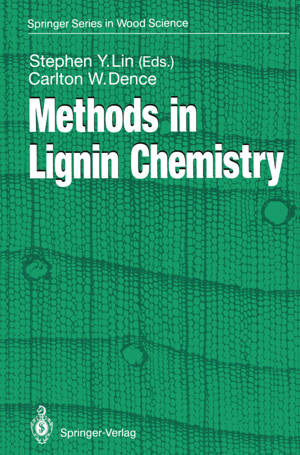
- Afhalen na 1 uur in een winkel met voorraad
- Gratis thuislevering in België vanaf € 30
- Ruim aanbod met 7 miljoen producten
- Afhalen na 1 uur in een winkel met voorraad
- Gratis thuislevering in België vanaf € 30
- Ruim aanbod met 7 miljoen producten
Zoeken
Omschrijving
The structural complexity of lignin has continually challenged the in- genuity of researchers to develop suitable methods for its charac- terization prior to and following a wide variety of chemical, biologi- cal, and physical treatments. Initially, activity along these lines was fueled by a desire to interpret technical delignification (Le., pulping) processes in terms of accompanying structural changes in the lignin. Subsequently, increasingly wide ranging, in-depth investigations on the structure and reactivity of lignin exposed the inadequacy of many of the methods currently in use and underscored the ever-continuing need to develop new methods capable of solving the unique analytical problems associated with lignin. Characteristically, such methods should be selective, sensitive, suitable for quantitative measurements, and capable of being applied directly to, and without destruction of, the lignin or lignocellulose sample. One notable example of the head- way being made in reaching this objective is the relatively recent devel- opment and refinement of methods based on the use of sophisticated instrumentation, e. g., lH_ and 13C-NMR spectroscopy. Although the utility of many of these and other recently developed methods de- scribed in this book has yet to be fully and satisfactorily exploited, we believe that progress already made in this direction will continue and most likely accelerate. The decision to produce this book was prompted mainly by the acknowledged need for an up-to-date, single source compilation of lignin methodology. Hitherto, this need was, in part, satisfied by B. L.
Specificaties
Betrokkenen
- Uitgeverij:
Inhoud
- Aantal bladzijden:
- 578
- Taal:
- Engels
- Reeks:
Eigenschappen
- Productcode (EAN):
- 9783642740671
- Verschijningsdatum:
- 8/12/2011
- Uitvoering:
- Paperback
- Formaat:
- Trade paperback (VS)
- Afmetingen:
- 156 mm x 234 mm
- Gewicht:
- 848 g

Alleen bij Standaard Boekhandel
+ 610 punten op je klantenkaart van Standaard Boekhandel
Beoordelingen
We publiceren alleen reviews die voldoen aan de voorwaarden voor reviews. Bekijk onze voorwaarden voor reviews.







